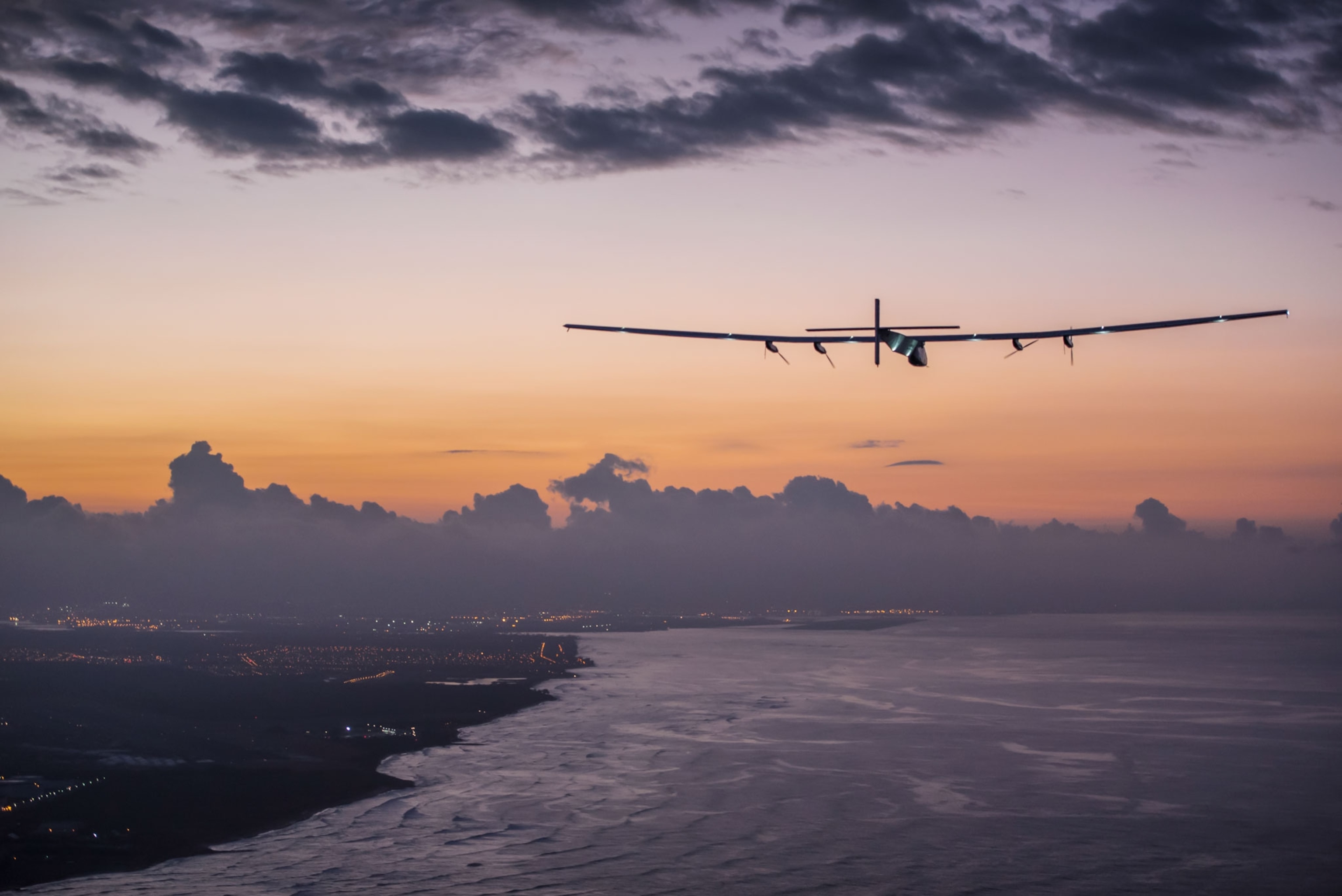
Solar Plane’s Trek Around The World Delayed By Battery Damage
The Swiss explorers say they will be grounded in Hawaii until at least April 2016.
The sun-powered plane known as Solar Impulse 2 successfully completed the most dangerous leg of its historic attempt to fly around the world—but not without consequences. The difficult journey overheated the aircraft’s batteries, causing severe damage, the team of Swiss explorers piloting the plane announced on Wednesday. As a result, they will be grounded until next spring.
Solar Impulse 2 landed in Kapolei, Hawaii on July 3, following a five-day flight that took off from Nagoya, Japan. The plane crossed more than 4,000 miles of the Pacific Ocean, traversing the same desolate region where Amelia Earhart disappeared 77 years ago.
During the first day of the trip, however, the batteries that store the solar-powered aircraft’s energy began to overheat and the flight crew had no way to cool them down. In a press release, the Solar Impulse 2 team said the damage to the batteries was not caused by weakness in the technology, but by the failure of the team to anticipate temperature fluctuations that occur during rapid ascents and descents in the tropical climate.
Because the plane is powered entirely by 17,000 photovoltaic cells attached to the top of its wings and fuselage, it relies on clear, sunny days to collect enough solar power to run its engines. Though it can fly through cloudy weather for up to 10 hours, it must soak up enough sunlight during the day to charge the batteries that keep the aircraft aloft during nighttime flying.
The four high voltage batteries collectively weigh nearly 1,400 pounds, accounting for more than one-fourth of the entire aircraft’s weight. Yet, they are smaller in size than similar batteries made just a decade ago. That was a crucial element in the plane’s design, since Solar Impulse engineers knew they needed a lightweight aircraft. A large plane needs a lot of thrust to get it off the ground and keep it moving forward. Even using the best available technology, solar-powered engines are weaker than gas-powered ones and offer less thrust.
This is not the first setback for the Solar Impulse team. Waiting for optimal weather windows has been the most difficult part of the journey. So far, the plane has been grounded for weeks at a time at several stops. This time, the plane’s crew will need more than a few weeks to get back in the air. It will require months to repair the batteries and to study various options for improving cooling and heating processes for very long flights.
If all goes well, Solar Impulse 2 will take off again in early April 2016, flying from Hawaii to the U.S. west coast in the next leg of a ‘round-the-world journey that will eventually end with it returning to its point of departure in Abu Dhabi.
“The adventure continues,” promised pilot Bertrand Piccard on his Twitter feed.




